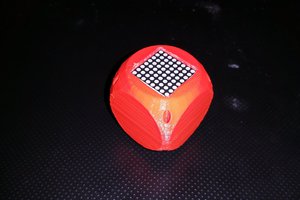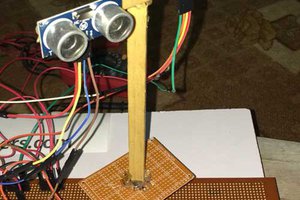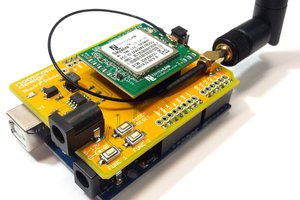Hallo Wordl is heavily inspired by the game Wordle. It is designed around 2 32x32 RGB panels distributed by Adafruit.
It requires use of an Arduino Mega for the relatively large amount of RAM overhead to run the graphics code on the RGB panels, and the additional digital pins for the keypad is also a nice to have.
As typical, the software is generated by standing on the shoulders and mixing and matching for the specific application. The graphics display are handled by Adafruit-supported libraries RGB Matrix Panel library, Adafruit GFX Library, and Adafruit BusIO.
Keyboard input is handled via a 3x4 matrix keypad also distributed by Adafruit. This was chosen to minimize the amount of wires needed. Users input letters using a scheme similar to T9 texting (non-predictive). Stray observation: This also allows it to function somewhat as a Millennial shibboleth in field trials. Software for the input is supported via Adafruit-supported library named Adafruit Keypad.
A list of ~100 Halloween-related, five-letter words is input in the Arduino. A random number generator is used to select the Answer for which the user is guessing. To generate the random seed, a common, yet elegant, process is used on the Arduino of taking a static reading an otherwise unused analog input pin that is on a floating voltage potential. Although probably not formally random, In practice this tends to do the trick for emulating randomness to the degree needed to keep the words challenging.
The cursor is advanced with the "#" character and retreated with the "*" character. After the cursor advance past the end of the current line, scoring and win processing is executed. Scoring methods, that is, the yellowing and greening of letters, are borrowed heavily from the code demonstrated by the channel "Learn CS with Dr. Victor" (https://www.youtube.com/c/CompSciwithDrVictor) and adapted for the variables names that were present in this implementation. Win or lose condition is communicated on the top line with either a word of praise or the correct answer, where appropriate.
The panels are powered by a 3s 2200mah lipo, which can supply around 4 hours of power at normal load of ~0.2-0.4 amps during operation.
Adafruit has a lot of cool involvement on projects for people like me who only know enough about electronics to be dangerous but learn more by doing things hands on. The wiring diagrams and code support they provide lowers the barrier of entry, and in my experience, their demonstrated quality of products more than offsets the higher costs compared to the bog-standard similiar components on Ebay . Toss them some bucks and help keep them happy and creative! I don't work for them nor am I sponsored by them, or receive hardware from them. I just respect the hell out of what they are doing.
 Ches
Ches
 Ford Sleeman
Ford Sleeman
 Abid Jamal
Abid Jamal
 Mark VandeWettering
Mark VandeWettering
 nootropic design
nootropic design